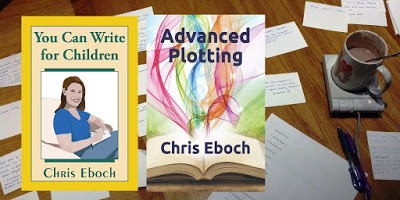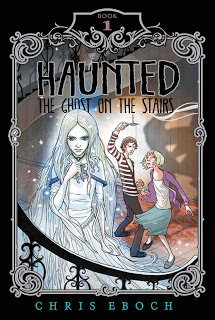The Promise of the First Chapter: #Writing Advice #amwriting
 The Promise of the First Chapter
The Promise of the First ChapterYou’ll hear it over and over again — opening lines are important. Your opening makes a promise about the rest of the story, article, or book. It tells readers what to expect, setting the stage for the rest of the story to unfold — and hopefully hooking their interest.
What You Promise
The first scene should identify your story’s genre. This can be trickier than it sounds. Say it’s a romance, but the main character doesn’t meet the love interest until later. Can you at least suggest her loneliness or desire for romance? (And get that love interest in there as soon as possible!)
 Maybe you’re writing a story involving magic, time travel, ghosts, or a step into another dimension, but you want to show the normal world before you shift into fantasy. That’s fine, but if we start reading about a realistic modern setting and then halfway through magic comes out of nowhere, you’ll surprise your reader — and not in a good way. Your story will feel like two different stories clumsily stitched together.
Maybe you’re writing a story involving magic, time travel, ghosts, or a step into another dimension, but you want to show the normal world before you shift into fantasy. That’s fine, but if we start reading about a realistic modern setting and then halfway through magic comes out of nowhere, you’ll surprise your reader — and not in a good way. Your story will feel like two different stories clumsily stitched together. If you’re going to start “normal” and later introduce an element like magic or aliens, try to hint at what’s to come. Maybe the main character is wishing that magic existed — that’s enough to prepare the reader. In my novel The Ghost on the Stairs, we don’t find out that the narrator’s sister has seen a ghost until the end of chapter 2. But on the opening page, she comments that the hotel “looks haunted” and is “spooky.” Those words suggest that a ghost story may be coming. That’s enough to prep the reader. (The title doesn’t hurt either.)
Your opening should also identify the story’s setting. This includes when and where we are, if it’s historical or set in another country or world. Once again, you don’t want your reader to assume a modern story and then discover halfway through that it’s actually a historical setting. They’ll blame you for their confusion. In a contemporary story, you may not identify a specific city, but the reader should have a feel for whether this is inner-city, small-town, suburban, or whatever.
Who and What’s Up in Your Novel's Opening PagesYour opening pages should focus on your main character. You may find exceptions to this rule, but your readers will assume that whoever is prominent in the opening pages is the main character. Switching can cause confusion. You should also establish your point of view early. If you’ll be switching points of view, don’t wait too long to make the first switch. In novels, typically you want to show your alternate point of view in the second chapter and then switch back and forth with some kind of regular rhythm.
 And of course, you want some kind of challenge or conflict in your opening. This doesn’t have to be the main plot problem — you may need additional set up before your main character takes on that challenge or even knows about it. But try to make sure that your opening problem relates to the main problem. It may even lead to it.
And of course, you want some kind of challenge or conflict in your opening. This doesn’t have to be the main plot problem — you may need additional set up before your main character takes on that challenge or even knows about it. But try to make sure that your opening problem relates to the main problem. It may even lead to it.In The Ghost on the Stairs, Tania faints at the end of chapter 1. Jon does not yet know why, but this opening problem leads to the main problem — she’d seen a ghost. If I’d used an entirely different opening problem, say stress with their new stepfather, that would have suggested a family drama, not a paranormal adventure.
In a short story, you need to introduce your main conflict even more quickly. A story I sold to Highlights started like this:
Jaguar Paw watched the older Mayan boys play pok-a-tok. The ball skidded around the court as the players tried to keep it from touching the ground. They used their arms, knees, and hips, but never their hands or feet. The best pok-a-tok players were everybody’s heroes. These boys were just practicing. But that meant Jaguar Paw could watch from the edge of the court.
That opening paragraph, 64 words, introduces the main character, identifies the foreign, historical setting, includes a specific location (the ball court), and hints at Jaguar Paw’s desire to be a ballplayer. Genre, setting, main character, and conflict, all up front.
Next week: The Fast Start
 Get More Writing Advice
Get More Writing AdviceChris Eboch is the author of over 60 books for children, including nonfiction and fiction, early reader through teen. Her writing craft books include You Can Write for Children: How to Write Great Stories, Articles, and Books for Kids and Teenagers , and Advanced Plotting .
Her novels for ages nine and up include The Eyes of Pharaoh , a mystery in ancient Egypt; The Well of Sacrifice , a Mayan adventure; The Genie’s Gift , a middle eastern fantasy; and the Haunted series, about kids who travel with a ghost hunter TV show, which starts with The Ghost on the Stairs . Learn more at https://chriseboch.com/ or her Amazon page.
Published on June 01, 2019 02:30
No comments have been added yet.



